Chris Moulin is a cognitive neuropsychologist at the Leeds Memory Lab who has recreated the sensation of déjà vu in a laboratory. Déjà vu is that unsettling sensation of feeling that you have witnessed a situation, although you know you never went through it before.
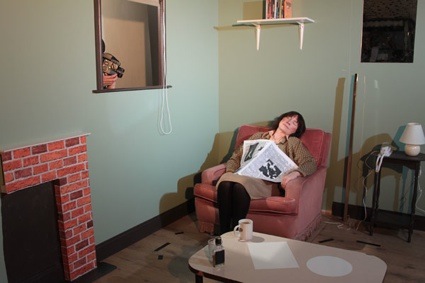 ‘Continuity’, – shooting on set
‘Continuity’, – shooting on set
Moulin and his team in Leeds are working with sufferers of chronic déjà vu on a detailed study of the condition. Some individuals can develop the feeling of déjà vu to such an extent that it becomes distressing, even causing depression.
Designer Emily Hayes and jewellery maker Karen Mabon had the opportunity to meet and discuss with Moulin. The researcher described one particular case study of a female who suffered from chronic déjà vu. The woman didn’t get much out of her house, afraid as she was of being continuously overwhelmed by the sensation of déjà vu. According to Moulin, the only method that enabled the patient to avoid the distressing illusion of familiarity was the paradox of repeating the same day and experiences over and over again.
As he said in an interview, “The most important thing for us, scientifically, is they’re not confused by mundane, repetitive events. It’s almost like the more novel and the more striking the event is, the more likely they are to get these sensations of déjà vu. That suggests they’re not making it up.”
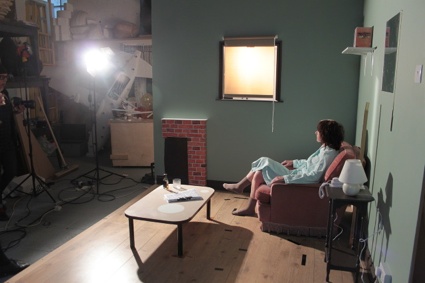
Based upon the woman’s story and Moulin’s research, Mabon and Hayes constructed a film-style set for the chronic déjà vu sufferer, complete with marks on the floors, visual instructions and specially-designed objects.
They also created a very detailed schedule to give a feeling of continuity and help the woman go through the day with as few surprises (hence risks of déjà vu) as possible.
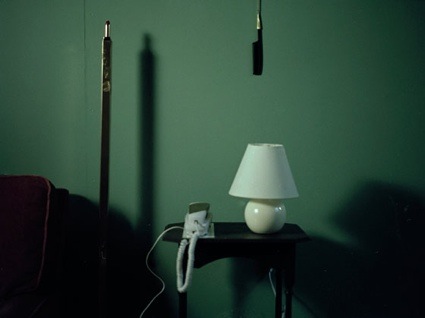 Phone handset with a carved imprint to determine where the hand should be placed
Phone handset with a carved imprint to determine where the hand should be placed
On the photo above, you can also catch a glimpse of a lipstick that comes with a very tall stand, it is gold to glamourise an activity in her schedule of the day, as everything else in her day is so mundane and ordinary.
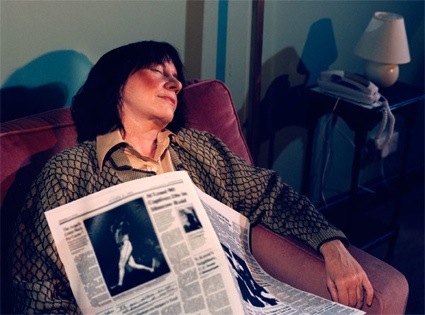 ‘Continuity’ – afternoon position
‘Continuity’ – afternoon position
When i asked her about the newspaper and whether it was a genuine daily that came with new content every day, Emily Hayes explained me: The newspaper is left open to interpretation for the viewer to decide what she would do with such items such as a newspaper, as this is a problematic part of her life. For the woman to succeed in having a life of consistent continuity and repetition she would need to keep everything the same therefore such elements of everyday life such as a newspaper, which are changing continually day to day, are unpredictable and inconsistent, so would this also need to remain the same? Would she completely detach herself from present life or be ruthless and remain in a non time and non space in order to escape her condition? How far would she go?
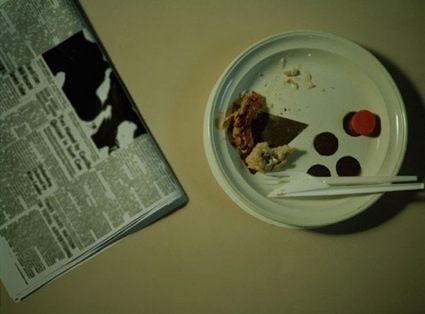 Marks on the dinner plate to position the food
Marks on the dinner plate to position the food
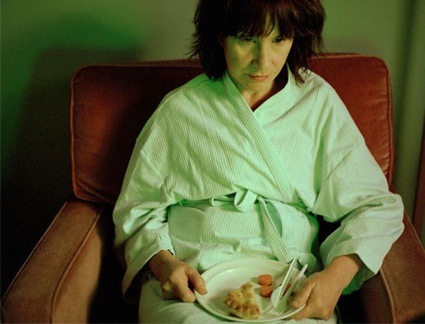 Continuity’ – evening position
Continuity’ – evening position
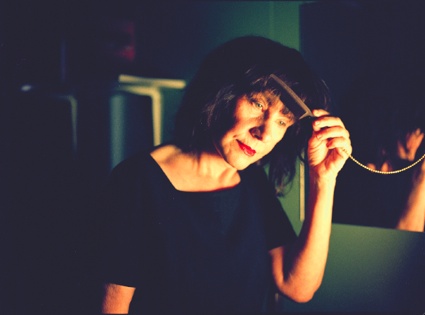 The comb is attached to the mirror
The comb is attached to the mirror
If this is the cure for the person suffering from chronic déjà vu, will it really lead to a better life?
Is such an experience of life sustainable, meaningful and ever possible to fully achieve?
